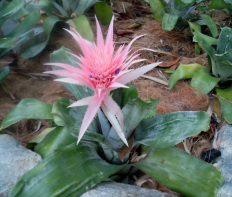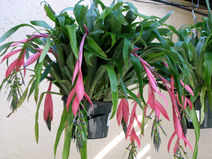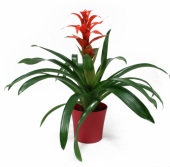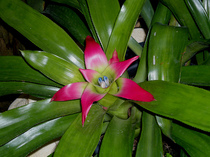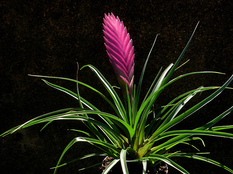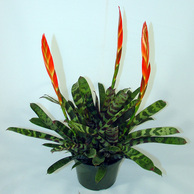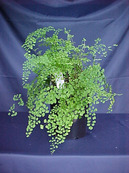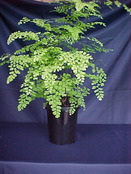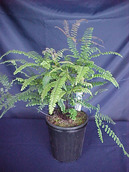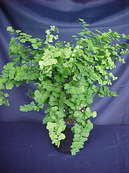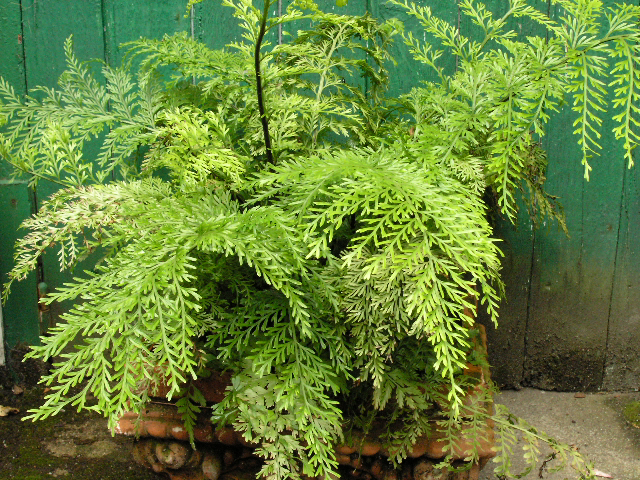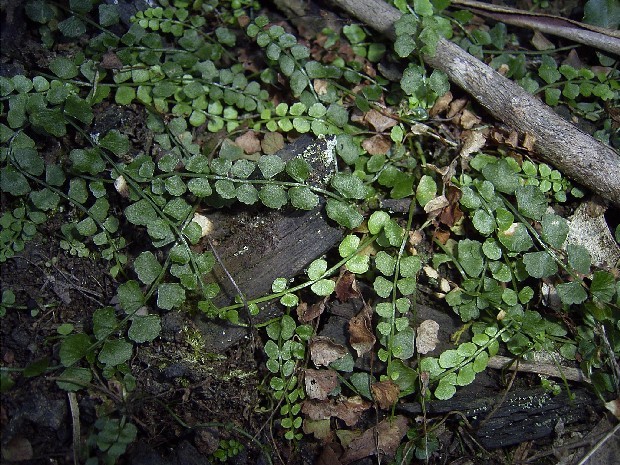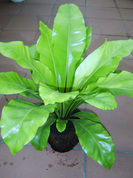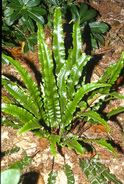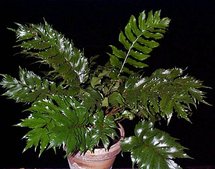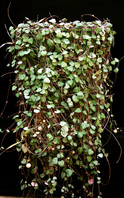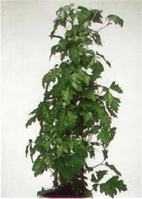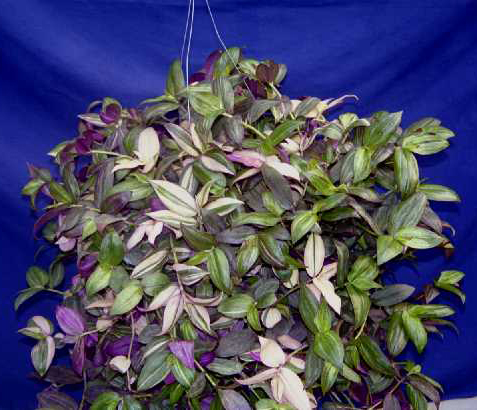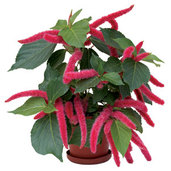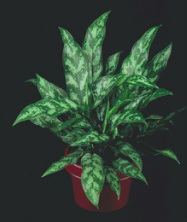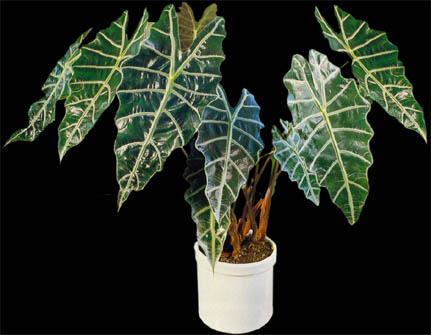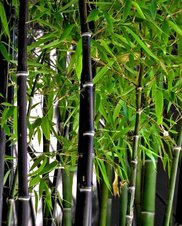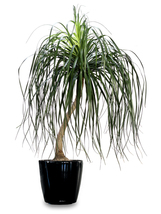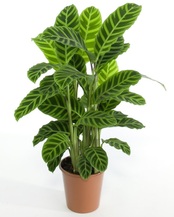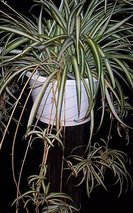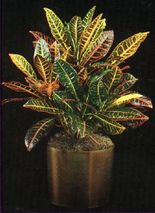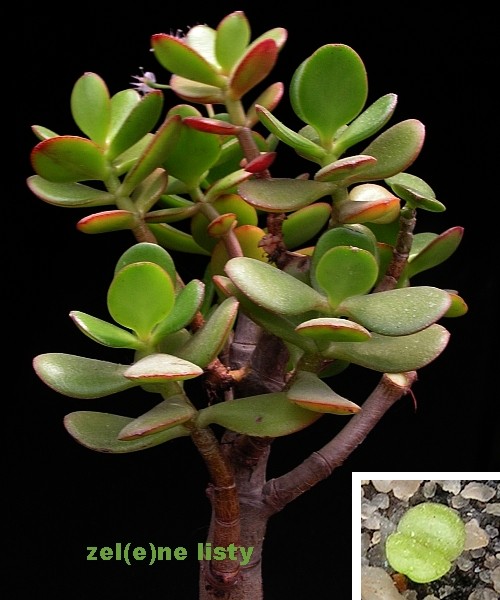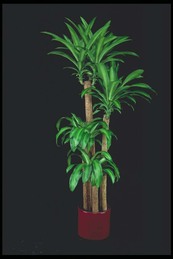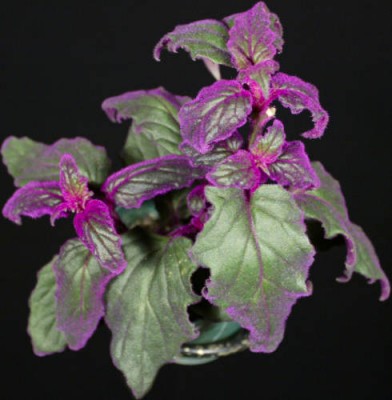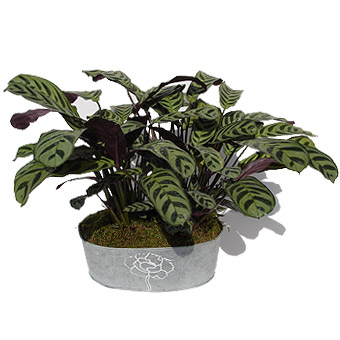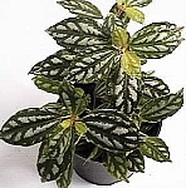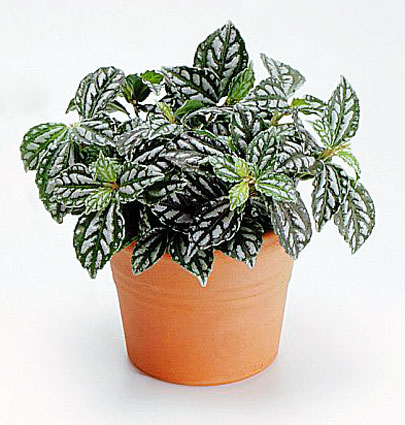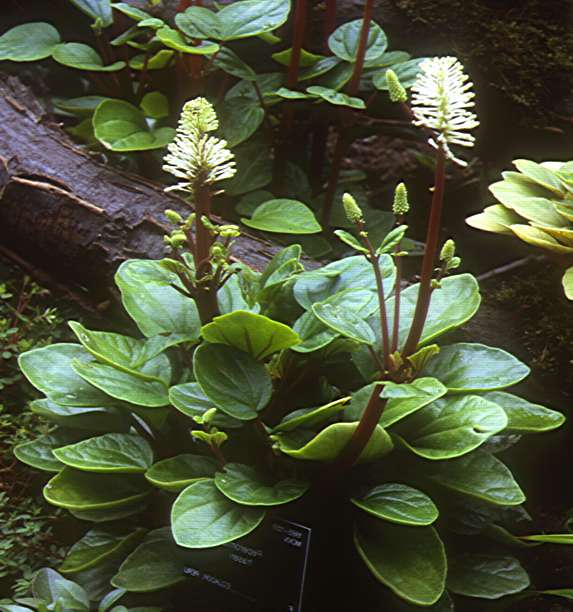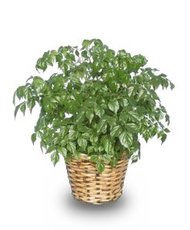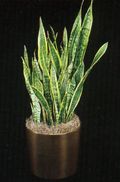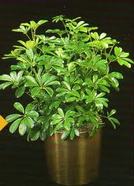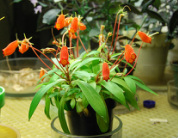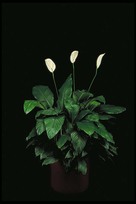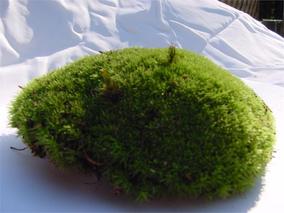Bromeliads
|
Aechmea fasciata (Urn plant / Silver Vase Bromeliad)
Very wide plant leaves grow 18 - 36 inches long and plant can grow one to three feet high. Requires partial shade and well draining soil. |
Billbergia Nutans (Queens Tears)
Better of as a hanging plant. A super durable houseplant. Will flower best in bright light but will also live in a partial shaded area. |
Cryptanthus zonatus (Earth stars)
Leaves are five to seven inches long with sharp serrated edges tapering to a sharp point . It enjoys frequent spraying and moist air, but not wet, heavy soil. |
Guzmania Lingulata
Need bright indirect light and roots must dry out between watering. Soil should be really porous allowing air to get to the roots. |
Ferns
Vines & Ivy's
|
Ceropegia woodii (Rosary Vine, Hearts entangled, String of hearts)
Water thoroughly, and then allow the soil to completely dry out before watering again. |
Cissus
A woody vine plant with over 300 different species. Soil should not be allowed to stay wet. |
Scindapsus (Pothos) Looks like philodendron, very hardy. Clippings will produice. |
Tradescantia (wandering Jew/ spiderwart)
Can cause skin iritation in humans when handeld frequently. Clippings will produice. Called inch plant because it can grow up to an inch a day! |
Other Plants
|
Beaucarnea recurvata (Ponytail Palms)
Not a real palm. Grows a large bulbous trunk at its base used for storing water. |
Calathea zebrina (Zebra plant)
Moist moderate temps and moderate light |
Chlorophytum (Spider plants)
Average humidity, moderate light, should be allowed to get almost dry before watering. |
Codiaeum variegatum
Very colorful and leaves can support the weight of a medium reptile. |
|
Monolina primuliflora (Monolena)
|
Pilea cadieri
creeping mass of tiny silver leaves 1/4" across. Easy to grow in terrarium conditions with well drained substrates. |
Peperomia (radiator plant)
some in this family are an epiphyte or air plant. Clippings will generally produice. |
Radermachera sinica (China Doll)
very difficult to root, Growth slowers used by nurserys will grow fast and less bushy. |
|
Sanseveria (Snake Plants)
aethiopica,caniculata,kirkii pulchra, parva, pinguicula, sinularis, thyrsiflora & trifasciata |
Schefflera arboricola (Umbrella Plant)
|
Seemania sylvatica
beautiful red fuzzy 1" flowers. Plants grow up to 12" tall and spread readily |
Spathiphyllum (peace lilies)
all lilys are toxic to cats *uses caution in tanks. |
*These plants have been claimed by some to be harmful in tanks with live animals. Some have been use with little to no problems, others are dangerous. Please use with caution or not at all.
*Hedera helix (Ivy, English Ivy) This plant is nontoxic to birds but is toxic to humans. It is unknown what would happen if a feeder insect were to eat it then a reptile were to eat it in exchange.
*Philodendron All parts of the plant are poisonous, due to the presence of calcium oxalate crystals. Make sure to double check this vs. Pothos, they look alike and are generally mix together at most plant stores.
*Dieffenbachia (Dumbcane) All parts of the plant are poisonous, due to the presence of calcium oxalate crystals. . It has been known to cause the death of cats, dogs, and small children. This plant is considered a neurotoxin.
*Croton - and Codiaeum variegatum look the same accept Croton (genus) Croton Oil is used as an active ingredient in facial chemical peels. Also in the past Croton oil was used in herbal medicine as a violent purgative. Some have claimed is has killed their pets.
*Dracunculus vulgaris ( Arum dracunculus, Voodoo Lily) Roots and other parts of the plant are listed as toxic.
*Begonia's Are known to be poisonous to cats and dogs, but the roots are the main danger. Since the roots are the main danger part it is best not to use them with females that may look to lay eggs (good or duds) in the roots.
*Hemigraphis alternata (purple waffle) Handling plant may cause skin irritation or allergic reaction in some people. Not known how it will affect Rhacs.
*Ficus (rubber trees, ornamental figs) Use caution with any plant of the ficus family that has a "milky sap" when leafs/stems are broken, it is a skin and eye irritant.
